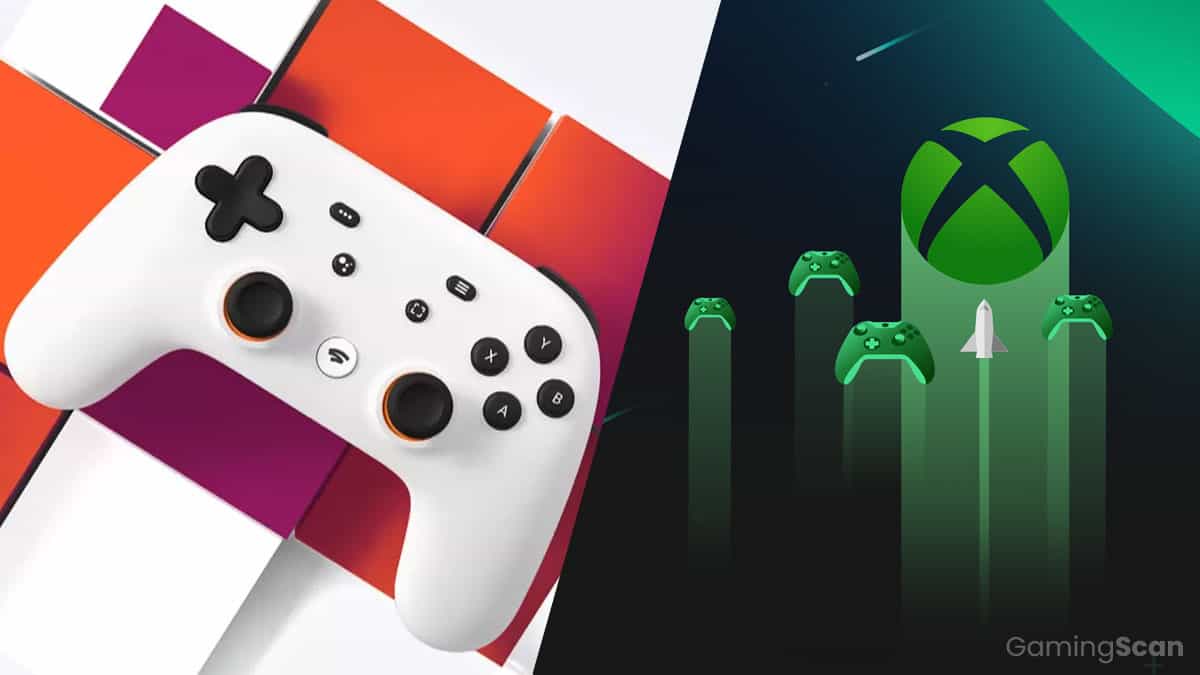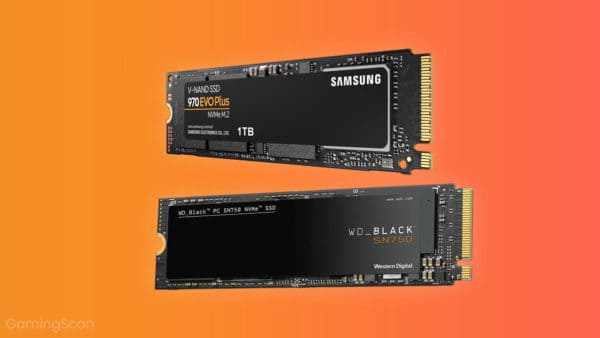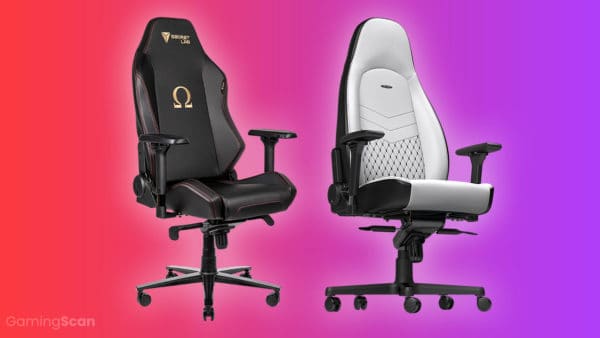Answer:
Cloud gaming (or game streaming) allows you to play games on a variety of devices while the actual game is running on a remote server.
As things stand, however, cloud gaming is rarely worth it since the current server infrastructure leaves a lot to be desired and many users would lack the requisite connection speed to get the most out of them anyway.
Video gaming has never had a shortage of buzz-worthy innovations, and one that is already here (but is yet to gain serious traction) is Cloud Gaming.
Now, cloud gaming can and does sound like an ambiguous term. For example, many consider the storing of saving files on a cloud, and thus allowing them to be accessed easily on multiple devices, to be an example of cloud gaming. And while that is a valid point of view, the type of cloud gaming we’re talking about here is a bit different and a lot more exciting.
It’s possible that you already heard about cloud gaming under the term “game streaming.” This is, again, a potentially confusing term that’s easily misunderstood as something to do with what streamers do on Twitch and other platforms, but it has nothing to do with that either.
Instead, this type of cloud gaming/game streaming carries with it the promise of allowing you to use any machine to play, even the most demanding games remotely at the highest settings.
Table of ContentsShow
How Does It Work?
In essence, cloud gaming is supposed to work like any other streaming service (Netflix, Amazon Prime, Crunchyroll, etc.) but for video games rather than movies and shows.
The idea is that you pay a monthly subscription (in most cases) and get access to a virtual machine that’s running somewhere on a server.
Then, you let that virtual machine handle all the heavy lifting while you game away on, say, a five-year-old laptop instead of a pricey gaming PC, or on a small streaming device akin to a set-top box instead of a console.
This way, your laptop or device won’t even run hot, nor use too much power, since they would essentially only be streaming video.
The way it generally works is rather simple: you install an app on your device, run it, and the service gives you access to a library of available games that you can play whenever you want, for as long as your subscription is active.
Of course, this isn’t always the case, as some services don’t offer monthly plans but charge per hour instead, all the while others don’t really offer you a game library but a flat-out remote virtual PC running Windows 10, where you can install whatever game or game launcher you want, be it Steam or something else.
When you’re playing a game this way, your device registers your input, transfers it to the server using the power of the Internet, where the server hardware does all the data processing, and then flings the video feedback your way.
In theory, this means that you could run games in 4K at 60FPS on pretty much any device. It could be on an old laptop, a smartphone, a smart TV, probably even a smart fridge (that’s right, Todd Howard’s dream of letting gamers play Skyrim on their smart fridges will finally become a reality). Moreover, it means that Macs will finally be viable for serious gaming.
But as with everything else, it’s important to make a distinction between theoretical potential and the cold, hard truth.
The Problems
And as cool as this whole idea sounds, it does suffer from four very critical problems: compression-grade video, high input lag, unoptimized hardware, and some system requirements.
Video Compression
Since the games you’ll be playing won’t actually be running on your device, the data will have to go all the way to the servers and then back again before your input has visible results.
The only way to do this, in even a remotely quick manner, is to compress the video. Now, most of the current game streaming services use only the best video encoding available that retains the highest quality possible while still being incredibly fast. However, the end result is still an image that looks like a video and feels like you’re watching a Let’s Play on YouTube rather than experiencing the game on your own device.
All in all, you can expect some compression artifacts and color banding, and even potentially nauseating motion blur if you’re playing a fast-paced game with lots of camera movement. A good monitor can mitigate these effects to some extent. Nonetheless, seeing as one of the biggest appeals of cloud gaming is avoiding the need to spend money on expensive hardware, you’ll hardly want to go out of your way to buy a high-end monitor just to stream games.
Input Lag
And, of course, there’s input lag. Since the data has to travel all the way to a server and back, the problem of high input lag becomes unavoidable. Living close to a data center could help, but the lag would still be noticeable.
Now, this isn’t to say that the games would be unplayable, not at all. Many of the companies that offer these streaming services are constantly developing new ways to mitigate input lag, and honestly, it’s not horrible even as things stand.
If you’re into competitive online multiplayer or even casual online multiplayer, then you’ll find that the lag is more than a little vexing.
Hardware Selection
As we have already established, the virtual machine you’d be using would be running on a server, and these servers (at least the ones currently available) use server-grade hardware. For example, Shadow advertises the GPUs it uses as ‘GTX 1080 equivalents’. And while this is technically true – the Nvidia Quadro P5000 is more or less or par with the GTX 1080 in many ways – that doesn’t mean it performs as well when it comes to gaming.
If you want to know more about why Nvidia Quadro cards aren’t the best for gaming, check out this article, but the short of it is: They simply aren’t as optimized for rendering graphics as quickly as the GTX cards are.
And the same goes for the CPUs. A virtual machine running on Shadow’s server will be allotted 8 threads on an Intel Xeon 2620 CPU. This may sound like a bargain, but keep in mind that server CPUs like the Xeon are optimized for a server’s needs, which means they have lots of cores working at relatively low clock speeds and excel at multi-tasking rather than single-core performance. And single-core performance is where it’s at as far as gaming is concerned.
So, not even the Xeon 2620 that Shadow uses is optimal for gaming, and the other game streaming services currently available all offer CPUs that aren’t as good as these, most of them with clock speeds well below 3 GHz.
System Requirements
This last one may sound completely out of place, with the main appeal of cloud gaming being the ability to run new games on outdated or otherwise incompatible hardware/software, but the thing is, you still have to meet a number of requirements before you can stream games.
Most importantly, you’ll need a very fast Internet connection, preferably a wired one. 5 GHz Wi-Fi can do the job if you’re close to your router, but even that’s not ideal.
For example, Shadow requires a stable Internet connection of 50 Mbps, and that’s without any of that bandwidth going towards anything else. So you’d pretty much have to have good cable internet or a Fibre Optic connection in order to stream a game while still leaving some bandwidth for other household members to use, as ADSL or satellite will rarely be fast or responsive enough.
The Cloud Gaming Of Christmas Past
If you’re just a casual gamer then there’s a good chance that Cloud Gaming will sound like something entirely new to you. With big companies such as Microsoft and Google only recently getting interested in this technology, it hasn’t ever garnered as much attention as it does today. But the concept is not new by any stretch of the imagination.
Not only was it being discussed as far back as the year 2000, but a cloud gaming service – OnLive – actually went live in 2010. The headlines foresee the doom of gaming consoles at the hands of game streaming soon followed, with the Inquirer claiming that this service will ‘render consoles obsolete.’
Despite the death of OnLive in 2012, Cloud Gaming lives on. PlayStation Now followed soon after, along with the likes of Shadow, Parsec, Vortex, and GeForce Now.
The Cloud Gaming Of Christmas Present
So how do these new services stack up?
Parsec and Vortex aren’t the worst, but they’re still far from ideal, mostly due to the fact that the CPUs they use are not good for gaming. They don’t handle input lag any worse than most of the other services, but their video quality still leaves a lot to be desired.
Shadow seems to be the best game streaming service currently available, with low input lag and the best image quality – courtesy of the 50 Mbps connection – but it feels a bit overpriced at the moment seeing as how it fails to deliver on its own promises of streaming games at either 144 FPS inFull HD or at 60 FPS in 4K.
GeForce Now could topple it, but seeing as it’s still in Beta, we can’t really discuss it any further at the moment.
And then there’s PlayStation Now, which is a somewhat different story. It allows users access to a vast library of games and is fairly inexpensive in the long term with the yearly plan ($60/yr i.e. $5/mo) but it is plagued by the same problems that are visual artifacts and input lag. Moreover, the virtual machines in question are virtual PlayStations, so the performance reflects this.
On the bright side, if you actually have a PS4, you can download PSNow games and play them locally, but then that is essentially renting a game rather than streaming it, and it’s only available on a PS4.
Is It Worth It?
So, to answer the titular question: Is cloud gaming worth it? Is it the future of gaming?
Well, yes and no.
As things currently stand, we definitely can’t see cloud gaming as a loyal substitute for PC or console gaming yet. The input lag is tolerable at best for playing single-player games, but it just isn’t good enough for online multiplayer.
But then again, none of the game streaming services seen so far had the backing of a company with infinite money, like Google or Microsoft. With their involvement in this business, we can definitely see how it has the potential to become a viable replacement for mainstreaming gaming. But as to whether it will become ‘the future of gaming’, that remains to be seen.
Conclusion
All in all, none of the game streaming services currently available can replace even a mid-range gaming PC, let alone deliver on the grandiose promises of 4K60FPS gaming that the marketing likes to flaunt.
The reasons for this mostly boil down to the hardware that these cloud servers use. Most of the time, these are Xeon processors that feature high core counts but sub-optimal core speeds, and Quadro GPUs that may be comparable in power to their GTX counterparts, but were not tailor-made for gaming. Add video compression, the input lag, and the internet speed requirements to the mix, and it’s obvious as to why cloud gaming just isn’t viable for most people.
Now, if you’re curious about what game streaming is like but are hesitant to try out any of the services, there is a different route you can take. One of the biggest appeals of game streaming is definitely being able to use underpowered laptops to run AAA games at max settings.
So, if you already have an underpowered laptop and, say, a pretty decent desktop PC, you can use Steam’s in-home streaming to stream a game from your PC to the laptop. The lag will be significantly lower than if your input had to go all the way to a server, but it’s still a cool way to test out the waters nonetheless.
Alternatively, you could always give that free trial a try over at PlayStation Now, as it’s available on PC and the PS4.
In the meantime, we’ll leave these links to the best $300, $1000, and $1500 PC configurations right here, just in case.



